The omega and the alpha
For many birds, the end of summer marks the beginning of spanking new feathers. Too bad adults have to go through that awkward molt to get them.
(Listen to the radio version here.)
I’m writing this on August 11 when, according to the sun, we still have almost six weeks of summer. But that hot, glowing ball of hydrogen and helium is 93 million miles away, much too far for even the savviest yellow dwarf star to have a clue about what’s happening here in Minnesota, where summer is pretty much over.
Many days the air quality has been too poor for me to stay outside long, but when I can, I like to sit out on my patio with my “patio camera." It has a 200-800 mm lens, so it’s way too heavy for me to hold steady, much less lug around when I’m walking, but it’s perfect when I’m on my patio watching birds in the back of my yard.
Feathers on most songbirds are designed to last about a year. Many species molt in late summer after they’re done with the arduous and energy-intensive work of producing and raising babies. Now, August’s rich supplies of berries and insects give them the nutrients they need to grow all new feathers and lay on fat in preparation for migration.

During most of the year, if a bird loses its tail feathers to a predator or accident, replacement feathers grow in rapidly. But last summer, one of my backyard catbirds lost all its tail feathers during the time it was feeding nestlings. With no nutrients to spare, it didn’t start growing new tail feathers until its young were getting most of their own food, making it easy to recognize for a couple of weeks. Catbirds have rusty undertail coverts, but those feathers were not at all “covert” without a tail to obscure them from above. When the bird’s babies got good at finding meals on their own, its tail grew back in a matter of days.
Some birds shed old feathers, especially on the head, before they can consume enough nutrients to grow new ones. Bald Blue Jays and cardinals grow new head feathers as soon as their young no longer need food subsidies.
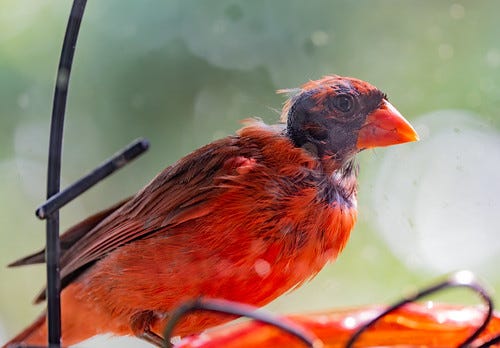
Bald or not, during the time that parent birds are giving the lion’s share of the food they find to their young, their old feathers grow increasingly ragged. For a few weeks more, we’ll still be able to recognize some adults by their messy plumage, but one by one they’ll finish molting and become as stunning as the progeny they sacrificed for.
My pair of backyard crows nested somewhere else in the neighborhood this year. Crow nestlings are loud, but I never heard these at all until after they fledged, when the parents started bringing their four chicks here. The whole family of six would pack into to my tray feeder when I brought out peanuts and whistled.
But then a couple of weeks ago I started noticing that one of the molting parents looked not just bedraggled but outright sick. It didn’t want to be caught, so I trusted that it knew what was best. But what with bird flu, West Nile virus, and whatever other diseases may be around, I was pretty nervous when I’d see it alone in my yard, hunched over on a branch as if it might topple over any moment.
But when the rest of the family was here, it joined them. Back when I was living with my education Eastern Screech-Owl Archimedes, I saw that as he got older, he got very lethargic every summer during his own molting period, and he didn’t have to provide food for chicks.
When he died at age 18, it was during that summer molt. I was pretty sure this poor crow would follow suit, but nope—in the past couple days, it seems to have passed the crisis point and is perky again.
I know BB the banded Pileated Woodpecker raised at least one chick this year because I saw him feeding her on July 14. At that point, she was already probing for her own insects—she wasn’t begging at all when BB flew over to feed her though she seemed happy enough to get the easy meal.
Based on her plumage and her ability to find her own food, she must have been out of the nest for at least a couple of weeks already. That’s why I suspect that BB nested earlier this year than in 2023, when he first showed up with what appeared to be a pretty new fledgling—her feathers were still growing and she was begging insistently—on July 10. That year, I saw him with chicks at least once and sometimes several times each day through September 9.
This year BB’s come a few times since July 14, but not with a fledgling, so I presume his young are on their own now. My neighborhood flickers also seem to have finished raising young on the early side this year. One local female even brought a fledgling to my feeder.
Thistle seeds are abundant right now. American Goldfinches use them, along with the soft, downy seeds of dandelions, milkweed, and other plants, as both food and building materials, eating the kernel while using the fine strands of silky down to weave their watertight nest.
Even as many birds are done raising chicks for the year, goldfinches are still building nests, laying eggs, or feeding tiny nestlings. They won’t molt until much later in the season.
My little stand of native thistle has been a goldfinch magnet for a couple of weeks now. They’ll eat just about any thistle seed, but the burs on the bigger non-native species are dangerous for them and other birds—invasive, non-native thistle plants should always be removed. If you don’t want to deal with such spiny weeds now that they’re huge and especially prickly, at least cut off the flowers before they go to seed, wrap them, and discard them in the garbage, not your compost. Remember to get rid of the whole plant by next spring.
Our society has made it increasingly difficult for birds to survive. Every action we take to make our own backyard, our neighborhood, and the larger world even a little safer won’t turn the tide but will make the lives of some birds easier. They deserve it.





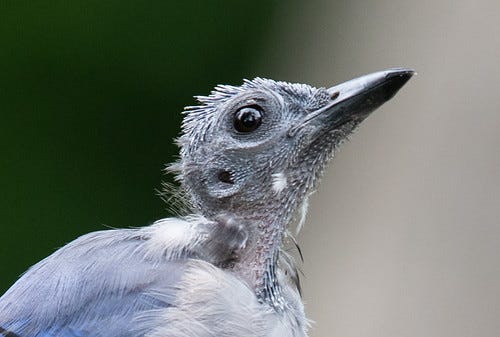
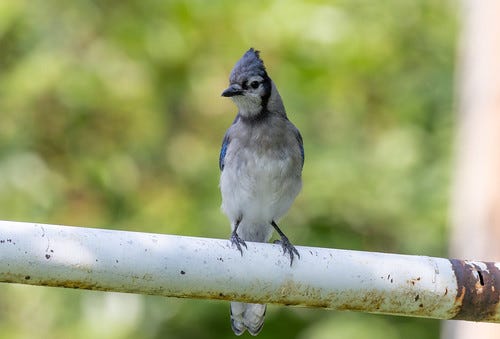
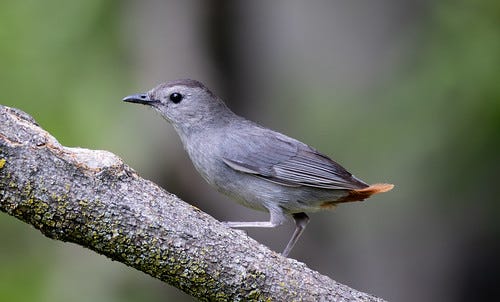

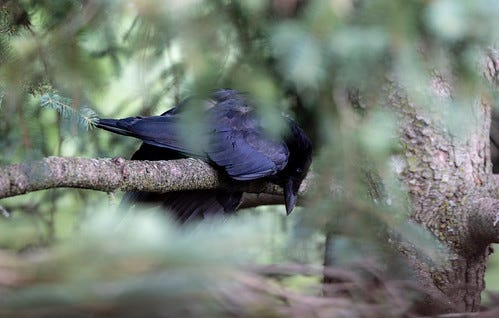

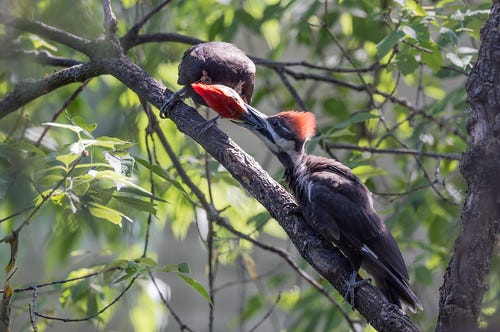
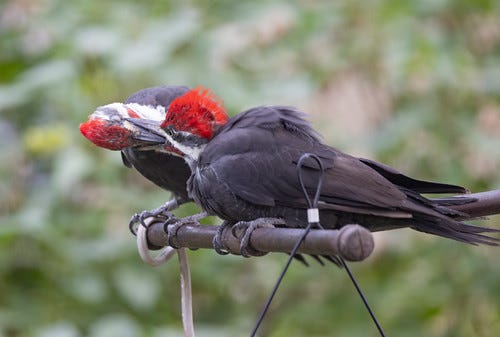

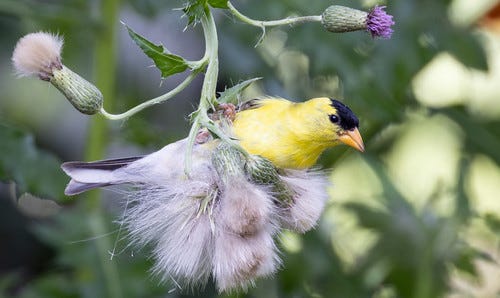
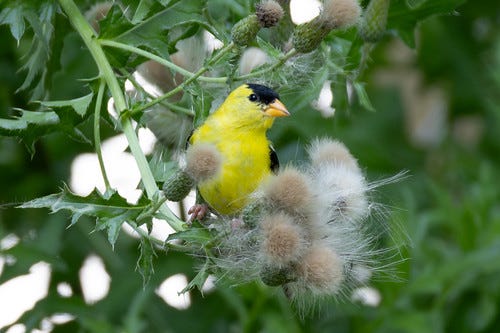
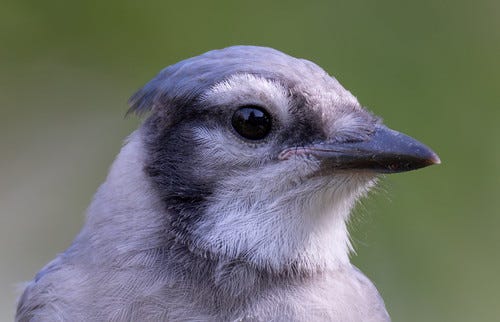
Came across a blue/grey long feather on the pond walk this morn..immediately I thought of your retelling of the molting birds go through and I supposed this was a blue jay feather?!